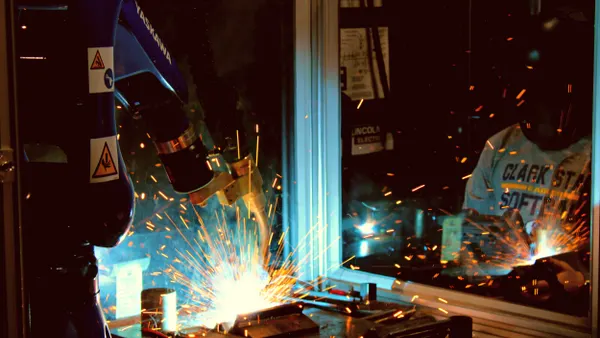Amid political pressures to raise federal minimum wages and create more US-based jobs, multinational companies like McDonald’s have stepped up to the plate to address an issue that impacts communities everywhere: low high school graduation rates.
The statistics are jaw-dropping. The U.S. Department of Labor estimates that 40 million adults in the United States do not have a high school diploma. This is a serious employment barrier. According to dosomething.org, the U.S. used to have some of the highest graduation rates of any developed nation, but now we rank 22nd out of 27 countries. Each year, approximately 1.2 million students drop out of high school. That amounts to a student every 26 seconds, or 7,000 daily.
It’s an epidemic that directly impacts communities, creates poverty conditions and takes hope away from people daily. The stigma of being a drop-out sticks with individuals who believe they aren't capable of learning or thriving.
McDonald’s partnered with Cengage, a global education technology company, to launch a program to help employees earn their high school diplomas and start on specific career tracks. The Archways to Opportunity program provided eligible U.S. employees a chance to access free educational advising, earn a real high school diploma through a nationally accredited program (Career Online High School), learn English as a second language and even go on to college with upfront tuition assistance. In the first year, nearly 5,000 McDonald’s employees enrolled. In 2017, Archways to Opportunity will celebrate its first 100 high school graduates.
HR Dive talked with Ron Stefanski, Executive Director of Strategic Alliances at Cengage about the unique challenges of designing a comprehensive high school diploma program for the employees at McDonalds. Since the company has historically had above-average turnover rates, and a restaurant career can include long grueling hours, one can see how difficult it can be to motivate employees to participate. However, what Cengage found was that an online format fit with the culture at McDonalds.
The McDonald’s employee development program currently has more than 17,000 participants, with a 70% completion rate. Stefanski says that," instead of focusing on high school dropouts, as a nation we should focus on getting people to drop back in."
HR Dive: What were the expectations going into the relationship with McDonalds professional development team?
Ron Stefanski: McDonald’s leadership went into the project with ‘How can we help our employees?’ at the forefront. Many lack high school diplomas — hampering their own growth. We created a pilot of the program and after testing it, took it nationally, using social media to engage employees. We've found that when theres’s no support, failure rates rise. We don’t just teach the core educational requirements, we layer in academic aspects within job-related skills development. So far, the program has a 70% completion rate.
HR Dive: Why high school diplomas - why not other skills?
Stefanski: McDonald’s is trying to change the conversation around workforce training. The program includes a chance to earn a career certificate. In addition, enrollees benefit from the same academic coach, who has an average background or they have worked with at-risk population before. Most students are around 27 to 28 years of age. The goal is to re-engage them. Many are going on to post-secondary training following the program. Entry level people are plugging in to other educational resources; creating a whole new market of lifelong learners so we can smash the myth that people can’t learn. They have abundant skills and they don't fit the stereotypes.
HR Dive: How did Cengage approach the design of the learning program for McDonalds’ employees?
Stefanski: Career tracks are based on corporate needs to upskill their employees and specific business goals, like food safety and hospitality, different eligibility requirements. McDonald’s is at the forefront of upscaling their benefits for employees. They are actually the first in the industry to offer educational benefits for franchise employees.
HR Dive: How did McDonald’s get employees to participate?
Stefanski: We designed an outreach campaign to appeal to employees: getting the entire community involved, boost the graduates, telling their stories. The impact it has had has been helpful to inspire and encourage peers to enroll, as best advocates.
HR Dive: What was the ROI?
Stefanski: McDonald’s CLO asked this question too. When one looks at the cost of turnover of employees, recruitment costs, huge training costs — with the average of 90 days until people quitting, the goal becomes improving the pool of available talent for other supervisory or unskilled jobs. Lots of testimonials were created as a result of the program. The program focuses on talent retention and development, because 70% of supervisory jobs are filled with internal people, a high percentage of McDonald’s managers also need to earn a high school diploma.
All of this effort elevates the brand and improves the restaurant experience for patrons. People are not going to trust the McDonald’s brand if they don't trust how the company is taking care of its people.




















